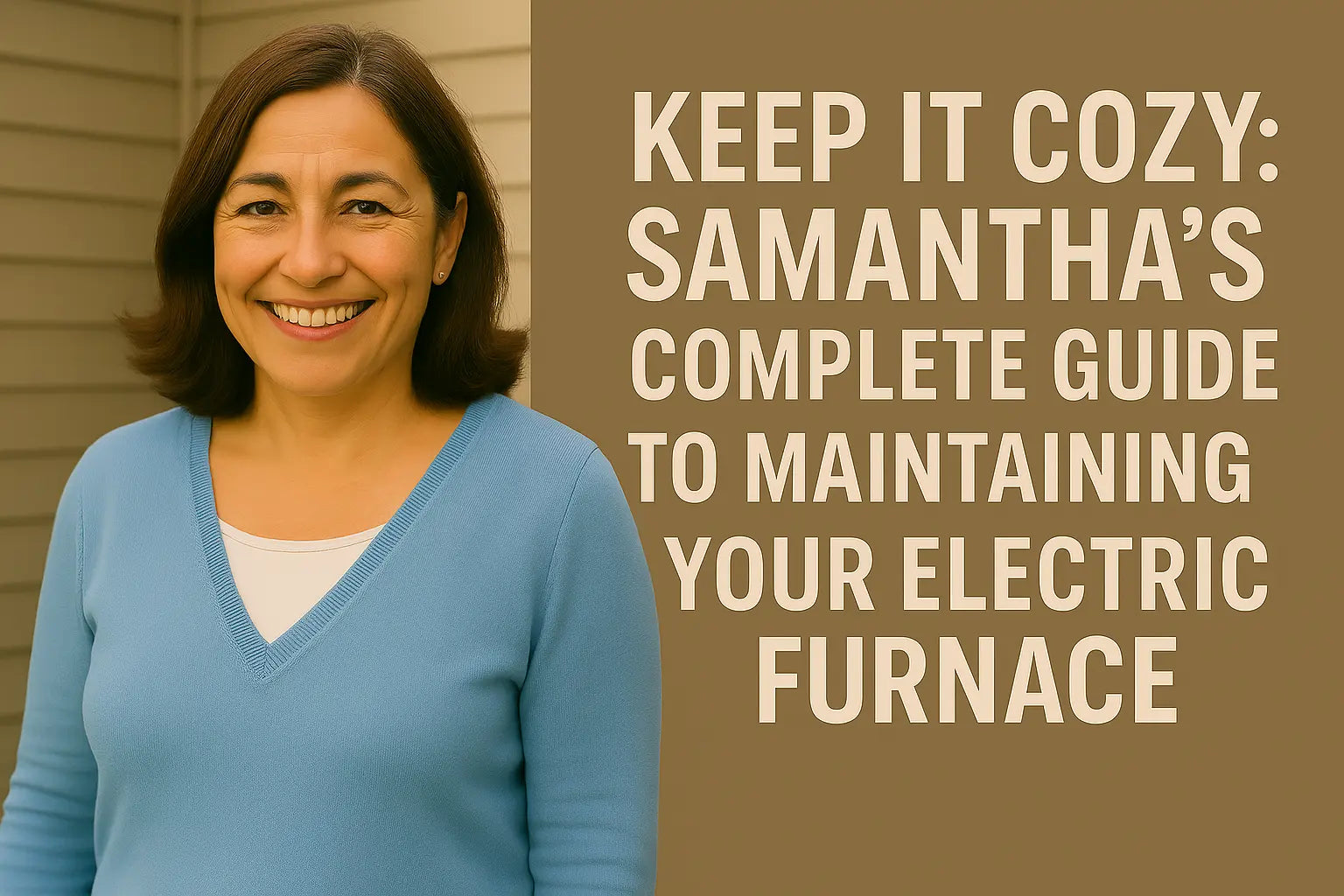Hey friends 👋 it’s Samantha!
If you're like me, you love the feeling of a warm home on a chilly day—and hate the surprise of a sky-high energy bill or, worse, a furnace that quits mid-winter. Let me walk you through what I’ve learned about electric furnace maintenance. Whether you're brand-new to HVAC or just want to keep your system in tip-top shape, this guide’s got you covered.
Let’s roll up our sleeves and make sure your system is running like a dream ✨
Why Electric Furnace Maintenance Matters (A Lot!)
Your electric furnace might not have burners or gas lines to worry about, but that doesn’t mean it’s low-maintenance. Quite the opposite. Regular upkeep improves:
-
System efficiency (so your home heats up faster)
-
Indoor air quality (important if you’ve got pets or allergies)
-
Component lifespan (translation: fewer repair bills)
-
Energy bills (you can save 10–25% with clean filters and good airflow!)
And let’s be real: It feels really good knowing you’re not depending on emergency service calls during a cold snap.
✅ According to Energy.gov, simple tune-ups can reduce your furnace's energy use by 15% or more.
Samantha’s Season-by-Season Maintenance Checklist 🗓️
Let’s break down the basics. Your electric furnace has a few core components that need regular love: the blower, the heating elements, the filter, and the thermostat. Here's how to keep them happy, broken up by season.
Fall Prep (Pre-Winter Must-Do’s)
-
Inspect and replace the air filter
-
This is the #1 most important (and most skipped) task. Replace it every 1–3 months during heating season. A clogged filter makes your system work harder and can even trip the limit switch.
-
Not sure what kind you need? HVAC.com’s Filter Guide is super helpful.
-
-
Vacuum your registers and vents
-
Dust and debris restrict airflow. Clear them out with a hose attachment.
-
-
Check the circuit breaker
-
Flip it off and on to ensure proper function. If it trips often, that’s a sign of deeper issues—usually with wiring or overloaded elements.
-
-
Test the thermostat
-
Set it 5 degrees above room temp. If the furnace doesn’t kick on within a minute or two, it may need recalibration or replacement.
-
-
Listen for strange noises
-
Squealing? Banging? Could be a loose belt or failing motor bearings. Catch it early before it becomes a pricey fix.
-
Mid-Winter Touch-Ups (January/February)
-
Filter check (again!)
-
Yes, I’m harping on this. Dirty filters are the silent furnace killer.
-
-
Inspect electrical connections
-
Turn off the system and look for burned wires or corroded terminals. If you’re not comfortable with this, schedule a quick electrical inspection.
-
-
Check for airflow restrictions
-
Move furniture away from vents. Obstructed flow reduces efficiency and causes hot/cold spots.
-
-
Clean the blower assembly
-
Use a soft brush or gentle vacuum to clear away dust and buildup around the blower housing and motor.
-
🧰 Want a visual walk-through? This DIY blower cleaning video from HVAC School is a great starting point.
Spring Cool-Down (Post-Season Closeout)
-
Do a full system shut-down check
-
Make sure the thermostat is set properly, and the breaker is off if you're switching to a cooling unit.
-
-
Inspect the heating elements
-
You’re looking for discoloration or visible warping. If you spot damage, call a licensed tech to replace them safely.
-
-
Wipe down the housing and inner cabinet
-
Dust and gunk settle here all season. A clean cabinet = better airflow and fewer allergens.
-
-
Schedule your annual professional checkup
-
Even if you’re a confident DIYer, I always recommend an annual inspection from a certified HVAC technician. Angi lists what a solid tune-up should include.
-
Smart Shopper Tips to Maximize Furnace Life 💡
I like to get the most from everything I invest in—and HVAC systems are no exception. Here are a few bonus tips to stretch the life of your electric furnace:
-
Install a smart thermostat
I love how mine adjusts automatically when we’re asleep or away. It saves us about 10% on bills, according to Consumer Reports. -
Seal your ducts
You’d be shocked how much heat you lose through leaky ductwork. Have it tested if you notice uneven heating or high bills. -
Use ceiling fans (in reverse)
Run your fans clockwise in winter to circulate warm air back down. Your furnace won’t have to work as hard. -
Keep furnace area clutter-free
Don’t store boxes, paint cans, or cleaning products near your furnace. Clear space improves ventilation and reduces fire risk.
When to Call a Pro (And Not Feel Guilty About It)
Even if you're handy, some jobs really are better left to licensed professionals. Call for help if:
-
The heating elements don’t cycle properly
-
Your breaker keeps tripping
-
The furnace smells like burning plastic
-
You hear grinding, squealing, or buzzing
-
It runs nonstop but never reaches temp
Don’t beat yourself up—these systems are complex. A certified tech can test internal wiring, check resistance across elements, and make safe replacements.
🛑 A great resource? The Better Business Bureau’s HVAC search will help you find reputable, certified pros in your area.
Final Thoughts from Samantha 🧣💬
Let’s be honest—maintenance isn’t the most glamorous part of homeownership. But it is the part that keeps your family warm and your energy bills sane. I’ve learned the hard way that even simple tasks (like a fresh filter!) can make a big difference.
If you’re shopping for a new unit or looking to upgrade, you know I love The Furnace Outlet’s electric furnace collection. Their systems are efficient, straightforward to maintain, and come with strong warranties.
Need more installation and troubleshooting tips for your electric furnace? Visit my guide right here!
Take care of your furnace, and it’ll take care of you ❤️ Stay warm out there, friends!
- Samantha, Home Comfort Advisor







